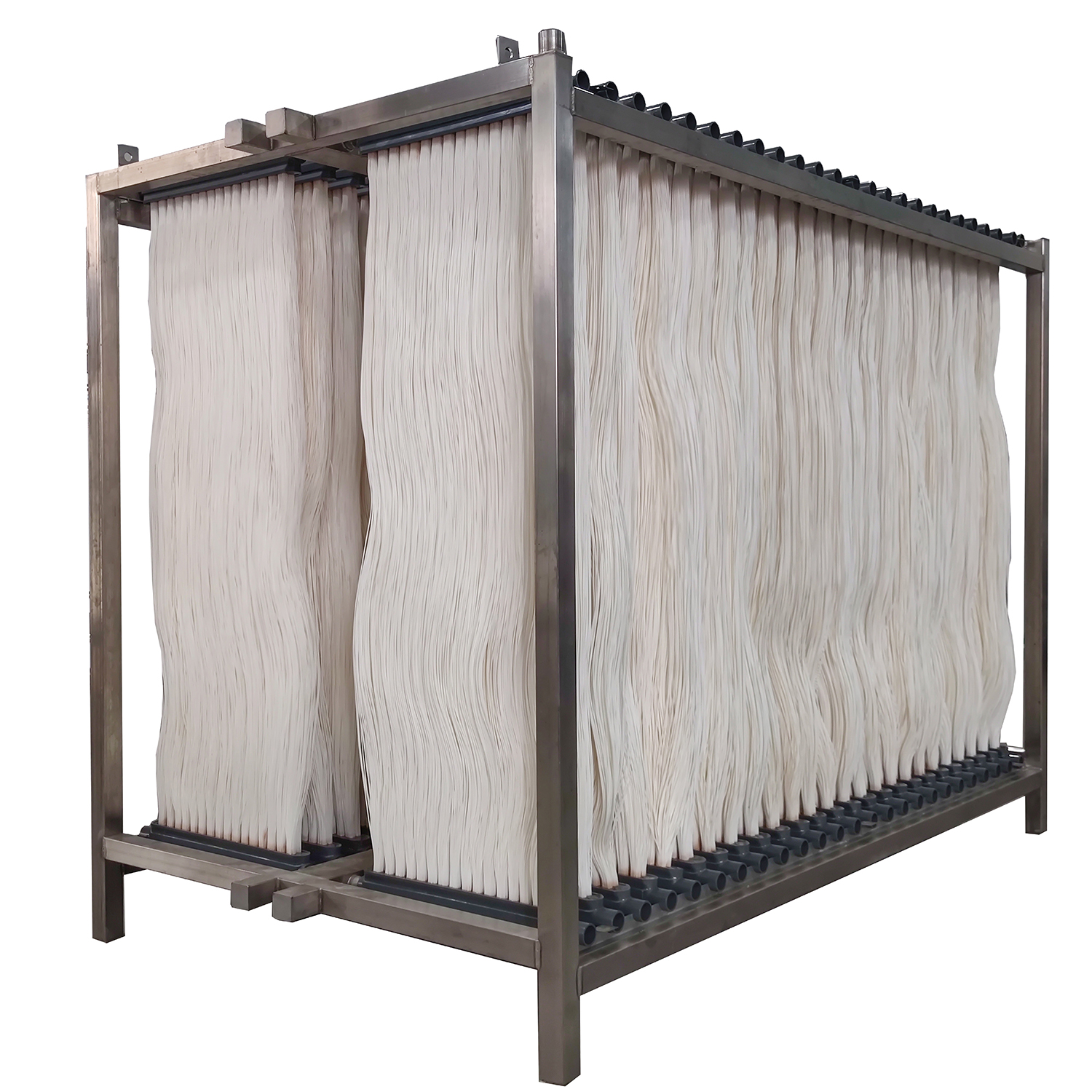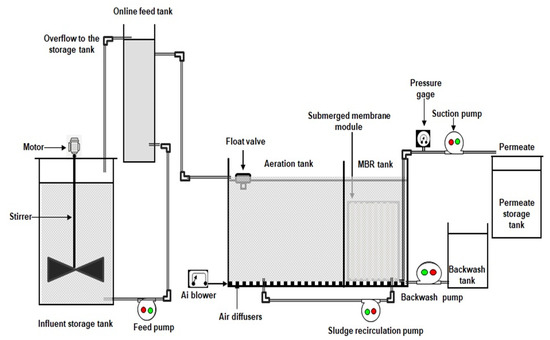How Membrane Bioreactor Technology Is Revolutionizing Wastewater Treatment
Wiki Article
Membrane Bioreactors Described: Efficient Solutions for Tidy Water
Membrane bioreactors (MBRs) have become an advanced solution for dealing with the pushing challenges of wastewater treatment. By incorporating organic procedures with sophisticated membrane filtering, MBRs not just improve the high quality of treated water but additionally reduce the spatial demands of treatment facilities. As ecological problems magnify, the role of MBR modern technology in promoting sustainable water administration comes to be increasingly significant. The complexities of their operation, advantages, and possible applications merit a closer examination to totally recognize their influence on the future of water therapy.
What Are Membrane Layer Bioreactors?
Membrane layer bioreactors (MBRs) are innovative wastewater therapy systems that integrate biological degradation processes with membrane filtration modern technology. This integration permits the reliable removal of contaminants from water, making MBRs a preferred choice in numerous applications, consisting of local wastewater treatment and industrial effluent monitoring.
Among the critical advantages of MBRs is their capacity to create high-quality effluent, usually ideal for reuse in irrigation or commercial processes. In addition, MBRs call for a smaller impact contrasted to conventional treatment systems, making them ideal for city settings where area might be restricted.
Moreover, MBRs can successfully handle differing influent tons and are much less susceptible to the impacts of toxic shocks. These features contribute to their expanding appeal as a sustainable solution for dealing with the boosting need for clean water while minimizing ecological influences.
Just How Membrane Layer Bioreactors Job
While the operation of membrane bioreactors (MBRs) might appear facility, it basically revolves around the harmony between biological procedures and membrane purification. MBRs integrate an organic therapy process, commonly triggered sludge, with a membrane layer separation system to deal with wastewater successfully.In an MBR system, wastewater is very first introduced right into a bioreactor where microorganisms deteriorate raw material and various other pollutants. The biological activity lowers the focus of pollutants while advertising the growth of biomass. Following this biological therapy, the mixed alcohol is subjected to membrane filtering, which can be microfiltration or ultrafiltration, depending upon the preferred effluent quality.
The membranes act as a physical barrier, permitting water and tiny solutes to pass while maintaining put on hold solids and larger molecules. This enables the system to maintain a high focus of biomass within the activator, boosting the therapy efficiency.
Moreover, the continual separation of treated water from the biomass helps with a portable design and lessens the impact of the treatment center. Overall, the combination of organic degradation and membrane purification in MBRs results in trusted and effective wastewater therapy, making certain premium effluent ideal for various applications.
Advantages of MBR Innovation
Among the essential benefits of membrane layer bioreactor (MBR) innovation is its ability to create top notch effluent with a considerably decreased impact contrasted to standard wastewater treatment approaches. MBR systems effectively combine biological therapy and membrane filtration, leading to superior removal of pollutants, including suspended solids, virus, and raw material. This ability brings about effluent that commonly meets or exceeds stringent governing criteria for reuse and discharge.Additionally, MBR innovation permits higher biomass concentrations, which boosts the treatment efficiency and reduces the required activator quantity. This portable style is especially helpful in city areas where space is restricted. The operational adaptability of MBR systems additionally indicates they can adapt to varying influent top qualities and circulation prices, making them appropriate for a vast array of applications.
Additionally, the minimized sludge production associated with MBR processes adds to lower functional and maintenance prices. The membranes act as a physical barrier, minimizing the risk of blocking and allowing longer functional periods between cleaning. On the whole, the advantages of MBR innovation make it an appealing solution for sustainable wastewater therapy, addressing both ecological problems and the need for efficient resource management.
Applications of Membrane Layer Bioreactors
With their flexibility and efficiency, membrane bioreactors (MBRs) locate applications throughout different sectors, including metropolitan wastewater therapy, industrial procedures, and also water recovery. In community setups, MBRs provide a why not look here small solution for dealing with wastewater, effectively eliminating contaminants while all at once producing top notch effluent that satisfies stringent regulative requirements. This makes them especially suitable for areas with restricted area.In industrial applications, MBR modern technology is utilized for treating procedure water, especially in markets such as food and drink, drugs, and petrochemicals. These industries profit from MBRs' capacity to take care of high natural lots and their efficiency in recouping beneficial resources from wastewater, such as nutrients and water.
Furthermore, MBRs play a vital function in water improvement efforts, allowing the reuse of dealt with wastewater for watering, commercial processes, or perhaps as safe and clean water after further therapy (Membrane Bioreactor). Their performance in getting rid of contaminants and microorganisms makes them a trusted selection for making certain water top quality in various reuse applications
Future of Water Treatment Solutions
The future of water therapy options is poised for transformative improvements driven by technological development and read the article increasing environmental recognition. As international water shortage ends up being a pressing issue, brand-new methods, consisting of membrane bioreactor (MBR) systems, are readied to play an essential role in enhancing the performance and sustainability of water therapy processes.Arising innovations such as synthetic knowledge and maker knowing are expected to enhance therapy procedures, permitting real-time tracking and predictive maintenance. This will certainly enhance the total dependability and efficiency of water therapy facilities. In addition, improvements in membrane products, such as graphene and nanofiltration, guarantee to raise permeation rates and lower fouling, resulting in lower power intake and operational prices.
In addition, the assimilation of renewable resource sources right into water therapy plants will certainly add to greener techniques. The circular economy version will certainly likewise get traction, motivating the recuperation of valuable sources from wastewater, such as nutrients and power.
Conclusion

Membrane see layer bioreactors (MBRs) have actually arised as an innovative service for attending to the pushing difficulties of wastewater treatment. By incorporating organic procedures with sophisticated membrane purification, MBRs not just boost the top quality of cured water yet additionally lower the spatial needs of treatment centers.One of the crucial advantages of membrane bioreactor (MBR) technology is its capability to produce premium effluent with a substantially lowered impact contrasted to traditional wastewater treatment techniques.With their adaptability and effectiveness, membrane bioreactors (MBRs) find applications across numerous fields, including community wastewater treatment, commercial procedures, and even water recovery.In final thought, membrane bioreactors stand for a substantial innovation in wastewater therapy technology, incorporating organic processes with efficient membrane layer filtering to generate top quality effluent.
Report this wiki page